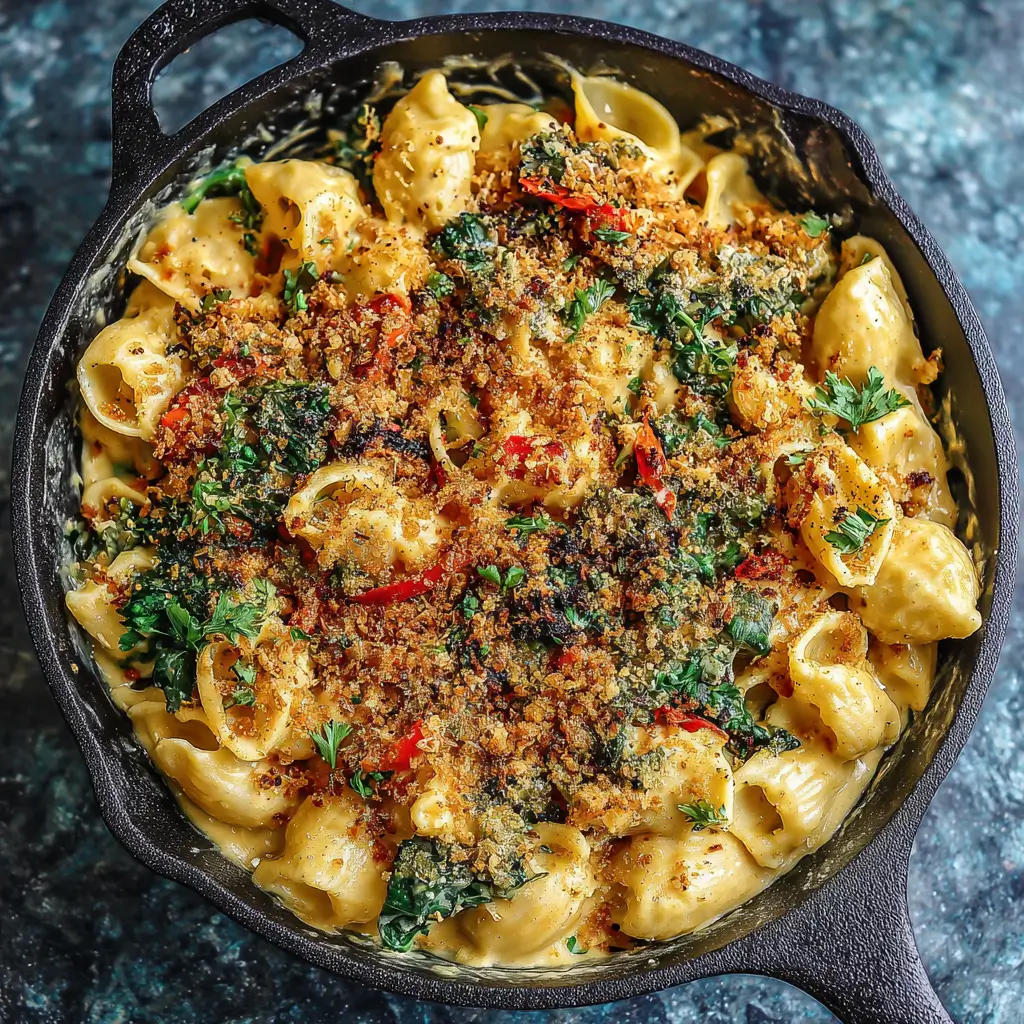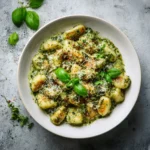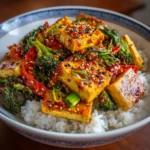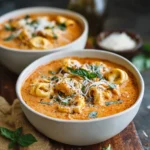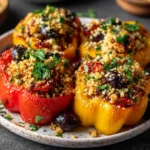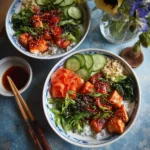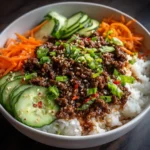Vegan Mac and Cheese: The Ultimate Comfort Food Reimagined
Who says you need dairy to enjoy creamy, dreamy mac and cheese? Vegan mac and cheese has taken the culinary world by storm, offering a rich, satisfying alternative that’s kind to animals, the planet, and your digestive system. Whether you’re vegan, lactose-intolerant, or simply looking to experiment with plant-based eating, this dish delivers all the indulgence of traditional mac and cheese without the guilt. Packed with wholesome ingredients and bold flavors, vegan mac and cheese is more than just a substitute—it’s a star in its own right.
The History of Vegan Mac and Cheese
The origins of mac and cheese trace back centuries, with variations appearing in European cookbooks as early as the 14th century. However, the modern American version gained popularity in the 20th century, especially after Kraft introduced its boxed version during the Great Depression. As health consciousness and ethical eating grew in the late 20th and early 21st centuries, so did demand for dairy-free alternatives. Enter vegan mac and cheese—a creative reinvention born from necessity and innovation.
Early versions relied on simple blends like potatoes and carrots or cashew paste, but as plant-based cuisine evolved, so did the techniques. Influenced by raw food movements, allergy-friendly diets, and global flavor profiles, vegan mac and cheese transformed into a sophisticated dish celebrated in home kitchens and high-end vegan restaurants alike. Today, it stands as a testament to how compassion and creativity can elevate comfort food to new heights.
Ingredients Breakdown: What Makes It Creamy Without Dairy?
The magic behind vegan mac and cheese lies in its ability to mimic the creaminess of melted cheese using entirely plant-based ingredients. Here’s a detailed look at the key components:
- Nutritional Yeast: Often called “nooch,” this deactivated yeast adds a savory, cheesy flavor due to its natural glutamates (similar to MSG). It’s also rich in B vitamins, including B12 when fortified.
- Raw Cashews: When soaked and blended, cashews create an incredibly smooth, rich base that mimics heavy cream or cheese sauce. They’re neutral in flavor, making them ideal for absorbing spices and seasonings.
- Vegetable Broth or Plant Milk: Used to thin the sauce to the perfect consistency. Unsweetened almond, oat, or soy milk work well, depending on preference.
- Carrots and Potatoes (optional): These starchy vegetables add body, sweetness, and vibrant color when boiled and blended into the sauce. They enhance creaminess without overpowering the taste.
- Tapioca Starch or Arrowroot Powder (optional): These natural thickeners help create a stretchy, gooey texture similar to melted cheese—ideal for that nostalgic pull.
- Onion, Garlic, Mustard, Turmeric: Aromatics and spices deepen flavor complexity. Yellow mustard adds tang, while turmeric lends a golden hue reminiscent of cheddar.
- Sea Salt and Black Pepper: Essential for balancing and enhancing all other flavors.
Together, these ingredients form a luscious, velvety sauce that clings perfectly to pasta, delivering a satisfying bite every time.
Step-by-Step Recipe: How to Make the Best Vegan Mac and Cheese
Follow this detailed guide to create a restaurant-quality vegan mac and cheese at home. This recipe serves 4–6 and takes about 45 minutes from start to finish.
Ingredients
- 1 pound (450g) elbow macaroni or any short pasta (gluten-free if needed)
- 1 cup raw cashews (soaked in hot water for 1 hour or overnight)
- 1 medium yellow potato, peeled and diced (about 1 cup)
- ½ medium carrot, chopped (about ½ cup)
- ¾ cup unsweetened plain plant milk (oat, soy, or almond recommended)
- ¼ cup nutritional yeast
- 2 tablespoons yellow mustard (preferably stone-ground)
- 2 cloves garlic, minced
- 1 small onion, roughly chopped
- 1 teaspoon onion powder
- 1 teaspoon garlic powder
- ½ teaspoon smoked paprika (optional, for depth)
- ½ teaspoon turmeric (for color)
- 1 tablespoon lemon juice (freshly squeezed)
- 1½ teaspoons sea salt (adjust to taste)
- ½ teaspoon black pepper
- 1 tablespoon tapioca starch or cornstarch (for extra cheesiness)
- 2 cups vegetable broth (low sodium preferred)
Directions
- Cook the Pasta: Bring a large pot of salted water to a boil. Add the pasta and cook according to package instructions until al dente. Drain, rinse briefly, and set aside. Do not overcook, as it will soften further when mixed with the sauce.
- Boil the Vegetables: In another pot, combine the diced potato and carrot with enough water to cover. Bring to a boil and simmer for 15–20 minutes, or until very tender. Drain and set aside.
- Blend the Sauce Base: In a high-speed blender, combine the soaked and drained cashews, cooked potatoes and carrots, plant milk, nutritional yeast, mustard, garlic, onion, onion powder, garlic powder, smoked paprika, turmeric, lemon juice, salt, pepper, and tapioca starch. Add ½ cup of vegetable broth to help with blending. Blend on high for 1–2 minutes, stopping to scrape down the sides as needed, until completely smooth and creamy. If too thick, add more broth or plant milk 1 tablespoon at a time.
- Heat the Cheese Sauce: Pour the blended mixture into a saucepan. Warm over medium heat, stirring frequently, for 5–7 minutes. The sauce will thicken slightly and become glossy. If using tapioca starch, you may notice it becoming stretchy—that’s exactly what we want! Taste and adjust seasoning—add more salt, mustard, or lemon juice if desired.
- Combine with Pasta: In a large mixing bowl or directly in the pot, combine the cooked pasta and warm cheese sauce. Stir gently until every noodle is coated evenly.
- Serve Immediately: Spoon into bowls and serve hot. For extra flair, top with chopped parsley, green onions, black pepper, or a dash of hot sauce.
Pro Tips for Perfect Vegan Mac and Cheese Every Time
- Soak Cashews Properly: For the creamiest sauce, soak cashews in hot water for at least 1 hour. For even better results, soak them overnight in room-temperature water. Avoid using roasted or salted cashews.
- Use a High-Speed Blender: A regular blender might leave grittiness. A Vitamix, Blendtec, or similarly powerful machine ensures a silky-smooth texture.
- Don’t Skip the Potato and Carrot: While optional, they add natural thickness and subtle sweetness that balances the sharpness of nutritional yeast.
- Acidity is Key: Lemon juice and mustard aren’t just for flavor—they mimic the tang of aged cheese. Don’t skimp!
- Reheat with Liquid: Leftovers often thicken in the fridge. When reheating on the stove or in the microwave, stir in a splash of plant milk or broth to restore creaminess.
- Season in Layers: Taste at every stage—after blending, after heating, and after combining with pasta. Adjust salt, acid, and spice gradually.
- Choose the Right Pasta: Short shapes like elbows, shells, or cavatappi hold sauce best. Gluten-free pastas made from brown rice or chickpea flour work well but may require closer attention to cooking times.
Variations and Customizations: Make It Your Own
One of the best things about vegan mac and cheese is its versatility. Try these popular twists to keep things exciting:
- Bacon & Chive Version: Top with crumbled tempeh bacon and fresh chives for a smoky, savory upgrade.
- Buffalo Style: Stir in ¼ cup buffalo sauce and fold in shredded vegan chicken or chickpeas for a spicy, protein-packed meal.
- Truffle Infusion: Drizzle with truffle oil and sprinkle with vegan parmesan for a gourmet touch.
- Broccoli & “Cheese” Bake: Mix in steamed broccoli florets, transfer to a baking dish, top with breadcrumbs and vegan butter, then broil for 5 minutes for a crispy casserole.
- Chipotle Lime: Add 1–2 teaspoons chipotle in adobo sauce and a squeeze of lime for a smoky, zesty kick.
- Loaded Nacho Style: Garnish with pickled jalapeños, diced tomatoes, black beans, guacamole, and vegan sour cream.
- Dairy-Free “Parmesan”: Mix ½ cup raw cashews, 2 tablespoons nutritional yeast, ¼ tsp garlic powder, and ¼ tsp salt in a food processor for a sprinkle-on topping.
- Kid-Friendly Version: Omit garlic and reduce spices; blend in a bit of sweet potato for natural sweetness.
Health Considerations and Nutritional Value
Vegan mac and cheese isn’t just delicious—it can be part of a balanced, nutritious diet when made with wholesome ingredients.
- Low in Saturated Fat: Unlike traditional mac and cheese made with butter and cheddar, this version uses heart-healthy fats from cashews instead of animal-derived saturated fats.
- Rich in Fiber: Whole grain or legume-based pasta boosts fiber content, supporting digestion and satiety.
- Packed with Vitamins: Carrots provide beta-carotene (vitamin A), potatoes offer potassium and vitamin C, and nutritional yeast delivers B-complex vitamins, including B12 (if fortified).
- Plant-Powered Protein: Cashews, nutritional yeast, and legume pasta contribute protein, helping make this dish more filling and balanced.
- Allergen-Friendly Options: Can be adapted for nut-free diets by replacing cashews with sunflower seeds or white beans. Use seed-based milk and gluten-free pasta for those with allergies.
- Lower Cholesterol: Entirely cholesterol-free, making it ideal for cardiovascular health.
- Watch Sodium Levels: To keep it heart-healthy, use low-sodium vegetable broth and limit added salt. Herbs and spices can compensate for reduced salt.
A typical serving (1 cup) contains approximately:
Calories: 380 | Protein: 14g | Fat: 18g (mostly unsaturated) | Carbohydrates: 45g | Fiber: 6g | Sugar: 6g | Sodium: 600mg (varies by ingredients)
Frequently Asked Questions (FAQ)
Can I make this nut-free?
Yes! Replace cashews with 1 cup of cooked white beans (like cannellini) or sunflower seeds. You may need to adjust liquid and seasonings slightly, but the result will still be creamy and flavorful.
How long do leftovers last?
Store in an airtight container in the refrigerator for up to 5 days. Reheat with a splash of plant milk to restore creaminess.
Can I freeze vegan mac and cheese?
Yes, though texture may change slightly upon thawing. Freeze in portion-sized containers for up to 3 months. Thaw overnight in the fridge and reheat gently on the stove with added liquid.
Why is my sauce gritty?
This usually means the cashews weren’t soaked long enough or your blender isn’t powerful enough. Always use raw, soaked cashews and a high-speed blender for best results.
Can I bake it like a casserole?
Absolutely! Transfer to a greased baking dish, top with breadcrumbs or crushed crackers mixed with vegan butter, and bake at 375°F (190°C) for 20–25 minutes until golden and bubbly.
Is nutritional yeast safe?
Yes, nutritional yeast is non-GMO, gluten-free (check label), and safe for most people. It’s different from brewer’s yeast and does not cause yeast infections or contain live cultures.
What can I use instead of tapioca starch?
Cornstarch, arrowroot powder, or potato starch can be substituted in equal amounts. Tapioca gives the best stretch, but others work for thickening.
Summary
Vegan mac and cheese proves that comfort food can be both compassionate and delicious, combining creamy cashew-potato sauce with al dente pasta for a satisfying plant-based masterpiece. Easy to customize, nutritious, and beloved by vegans and omnivores alike, it’s comfort food redefined for the modern table.
